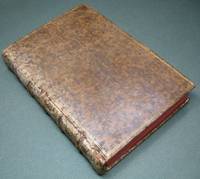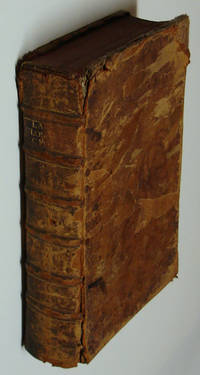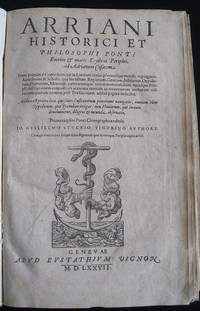
HIERAKOSOPHION. Rei Accipitrariae scriptores nunc primum editi. Accessit KUNOSOPHION. Liber de cura canum. Ex biblioth. Regia Medicea. (Hoc volumine continentur 'Demetrii Constantinop. de re accipitraria liber, a Petro Gillio latine redditus; Alius liber de re accipitraria, latine redditus ab eodem P. Gillio; Libellus de cura canum, latine versus ab Andrea Aurifabro Vratislavienssi medico; Epistola Aquilae Symmachi et Theodotionis ad Ptolemaeum regem Aegypti, de re accipitraria, catalanica lingua; De diversis generibus falconum, sive accipitrum (...) Ex libro incerti auctoris, De Natura Rerum; Jacobi-Augusti Thuani de re accipitraria libri III; Hier. Fracastorii Alcon, sive de cura canum venaticorum) (Edidit N. Rigault)
by HIERAKOSOPHION
- Used
- Hardcover
- Condition
- See description
- Seller
-
AMSTERDAM, Netherlands
Payment Methods Accepted
About This Item
Reviews
(Log in or Create an Account first!)
Details
- Bookseller
- Antiquariaat Fragmenta Selecta
(NL)
- Bookseller's Inventory #
- 153425
- Title
- HIERAKOSOPHION. Rei Accipitrariae scriptores nunc primum editi. Accessit KUNOSOPHION. Liber de cura canum. Ex biblioth. Regia Medicea. (Hoc volumine continentur 'Demetrii Constantinop. de re accipitraria liber, a Petro Gillio latine redditus; Alius liber de re accipitraria, latine redditus ab eodem P. Gillio; Libellus de cura canum, latine versus ab Andrea Aurifabro Vratislavienssi medico; Epistola Aquilae Symmachi et Theodotionis ad Ptolemaeum regem Aegypti, de re accipitraria, catalanica lingua; De diversis generibus falconum, sive accipitrum (...) Ex libro incerti auctoris, De Natura Rerum; Jacobi-Augusti Thuani de re accipitraria libri III; Hier. Fracastorii Alcon, sive de cura canum venaticorum) (Edidit N. Rigault)
- Author
- HIERAKOSOPHION
- Book Condition
- Used
- Binding
- Hardcover
- Keywords
- (Oude Druk) (Rare Books) Birds Cynegeticon Falke French imprints Greek text Haarlem Habicht Jagd Latin translation Veterinärmedizin Vögel byzantine literature byzantinische Literatur dogs falcon hawk hunting veterinarian science
- Bookseller catalogs
- Old and Rare books;
Terms of Sale
Antiquariaat Fragmenta Selecta
Books may be returned for any reason within 14 days of receipt. The book price will be refunded, if the book is returned in the same condition as sent, and packed, shipped and insured as received. A full refund including shipping costs will follow only if an item arrives misdescribed or damaged. Shipping estimates are based on books weighing 4.4 LB or 2 KG. If your book order is heavy or oversized, we will email you to let you know that extra shipping is required. All books are in good antiquarian condition, unless otherwise described. Items offered are subject to prior sale.
About the Seller
Antiquariaat Fragmenta Selecta
About Antiquariaat Fragmenta Selecta
Glossary
Some terminology that may be used in this description includes:
- Leaves
- Very generally, "leaves" refers to the pages of a book, as in the common phrase, "loose-leaf pages." A leaf is a single sheet...
- Gilt
- The decorative application of gold or gold coloring to a portion of a book on the spine, edges of the text block, or an inlay in...
- Fine
- A book in fine condition exhibits no flaws. A fine condition book closely approaches As New condition, but may lack the...
- Verso
- The page bound on the left side of a book, opposite to the recto page.
- Spine
- The outer portion of a book which covers the actual binding. The spine usually faces outward when a book is placed on a shelf....
- Bookplate
- Highly sought after by some collectors, a book plate is an inscribed or decorative device that identifies the owner, or former...
- Morocco
- Morocco is a style of leather book binding that is usually made with goatskin, as it is durable and easy to dye. (see also...
- Calf
- Calf or calf hide is a common form of leather binding. Calf binding is naturally a light brown but there are ways to treat the...
- Edges
- The collective of the top, fore and bottom edges of the text block of the book, being that part of the edges of the pages of a...
This Book’s Categories
Also Recommended
-

Save 10% on every purchase!
Join the Bibliophiles’ Club and start saving 10% on every book.
$29.95 / Year







